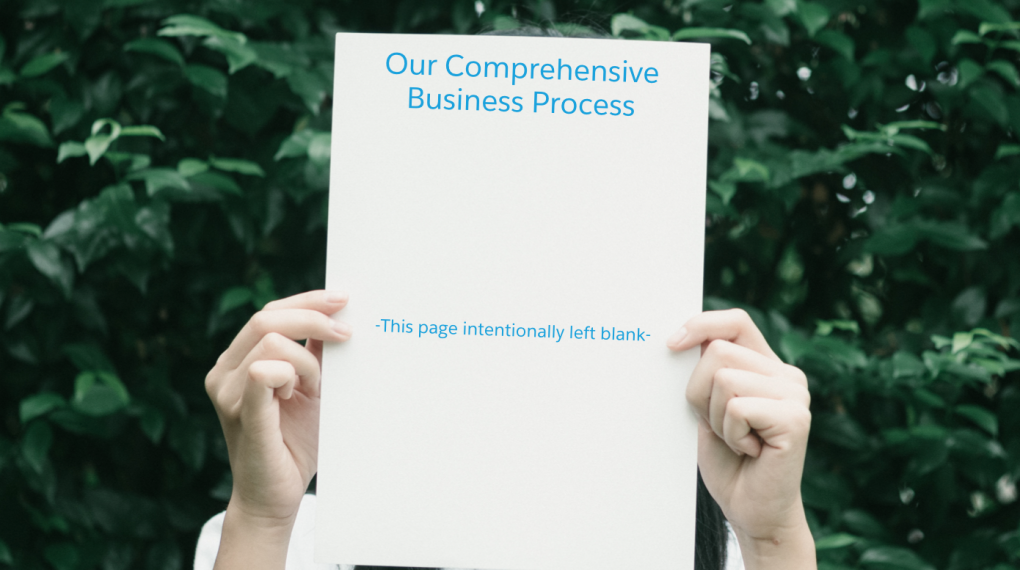Introduction
In this multi part series, I’m going to uncover some of the aspects from my former life as a PRINCE2 project manager that I’ve carried over into Salesforce consulting. Coming from a waterfall background, I’m particularly sensitive to the areas where a stricter, more linear process would have benefited and I hope this series can bring the two worlds harmoniously together.
It’s Not The Destination, It’s The Journey
Due to an increasingly unmanageable configuration and ageing hardware, shipping container supplier Unrestricted Receptacles (UR) has decided to replace its CRM and sales system with Salesforce. To help simplify the build and rollout for their consulting partner, Christopher International, UR has decided to strip its product line down to three flavours and the old systems can be mined for order statuses, complex financial formulae and approval routes. Unrestricted Receptacles know their business inside and out. And they believe it’s a really simple model.
As it’s the start of the project, everyone is on board with 110% enthusiasm. The whole team sees nothing but blue skies and calm sailing conditions ahead. It’s a good feeling. With the best will in the world, however, both companies should do their best to avoid the following pitfalls.
Unrestricted Receptacles Know Their Business
This is a company that has 50 years of experience in the market. There are employees who have been with the company since they left school and the whole organisation runs like a well oiled machine. That is until someone is asked to write down their process – the basic foundation of how UR works. Even if everyone knows how they do their job, these things should always be written down. As a start, it works as a great reference or onboarding tool. But where it really comes into play is when you’re trying to identify slack, pain points and redundant steps.
Too many projects start with the following document for a company’s process flow.

Unrestricted Receptacles Wants To Hold On To The Past
“We want you to come in and revitalise the way we work. Give us your best practice.”
A lot of projects start off with those bold words. To a consultant, they’re a dream come true. The chance to rip a company’s way of working apart and put it back together.
That is until you encounter integrated systems that won’t be altered, complex methods of reporting that keep the business open and more often than not, internal politics to navigate. The result is an opportunity to change 10% of the whole, something that is especially frustrating when you know your beautiful design could improve the final product 100%.
In our example, for Unrestricted Receptacles to get the full benefit of a “new world”, they need to leave the old one behind. Complex mathematical mechanics can sometimes get in the way of just getting to the core of understanding what money has come in to the business and what money has gone out.
Seriously, Throw Out The Past
UR wants to bring across business logic from an old system. Instead, they should start afresh and avoid referencing old design decisions from the past. Design decisions made a decade ago, if not longer, were no doubt done so to cater for an outdated technological restriction. Unrestricted Receptacles need to free their new world from the shackles of a 10-20 year old piece of software and in the process, make users’ lives easier and the business simpler and more efficient.
Unrestricted Receptacles Relies On The Consulting Partner To Document Their Business
UR knows its business better than the consulting partner does. The stakeholders are the gatekeepers of what they do. As such, it’s a huge mistake to verbally explain the business process and then ask the partner to document how they “think xyz works and we’ll tell you if you’re right”. Unrestricted Receptacles needs to step up to the plate and invest people and time in the project.
Unrestricted Receptacles Only Invest Money In The Project
UR has invested a lot of money in this project and they have committed to funding the transformation over it’s expected timeline. What is missing however, is expertise and stakeholder engagement. UR’s employees are their greatest tool and these valuable resources should be given the breathing space to step away from their day job as needed.
Testing Is Not A Box Ticking Exercise
Finally, it’s vital for UR to ensure the testing process is given the time, resource and respect it deserves. When a project runs late, testing is usually the first casualty to the schedule and yet, it’s just as vital as the design and build phases. Thorough and well planned testing can uncover the majority of issues not noticed by a developer. This is partly because an end user will try to tackle a greater number of scenario variations than the developer envisioned, but also, because they may go off the beaten track.
It’s All Scalable
Chances are after reading the above, you fall into one of two camps, a) that’s a lot of work or b) that’s all obvious stuff. If you fall on the latter, you’re dismissed, no homework this week. If however, you fall on the former, don’t be overwhelmed by what may seem like a lot of steps. Like most methods in project management, this is scalable. Testing on a two-week project, for example, should only take one or two days. If the project is 6 months though, you will no doubt have a far more complex product, which will require far more testing.
Overall, just keep on top of these points and your project will have a much higher chance of success.

